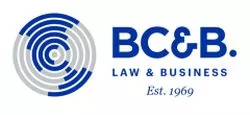The legislation on patents – the Industrial Property Law – establishes that a patent application must include detailed sections, such as the specifications, drawings and their description, claims and an abstract. Professionals directly involved with this branch of intellectual property are familiar with the information contained in these sections, as this knowledge is critical in order to deal with objections raised by the Mexican Institute of Industrial Property (IMPI) in the substantive examination of a patent application.
The set of claims of a patent application contains the subject matter for which the rights conferred by the patent will be granted. Therefore, this subject matter must be properly supported in the original application as a whole (Article 55bis of the Industrial Property Law). Thus, if the intention is to protect a composition containing elements A, B and C, which are duly disclosed in the application, but this composition also claims an element D that has not been described in the specification, the composition would not be granted patent protection. The inclusion of element D would extend the scope of protection of the patent to an additional element that was not initially considered in the specification; this would imply claiming additional matter. But what happens when the application describes this element D and the examples include compositions with only elements A, B and C?
In this regard, Article 47(1) of the Industrial Property Law and Article 28(7) of its regulations state that the specification must include mention of the best method known by the applicant to implement the invention, and that this mention must take the form of practical examples or specific uses of the invention.
To receive occasional objections requesting that the claims be limited solely to the content of the examples is understandable, as there are patent applications that could justify such an approach. Selection patents – intended to protect a specific selection of an already existing invention – are a clear example of a patent application that receives such a request by the IMPI, since it necessarily requires either examples that demonstrate a technical advantageous effect for that precise selection or the exemplary uses to demonstrate the patentability of the application, which in these cases is usually compromised in view of the closest state of the art. It therefore becomes necessary to demonstrate the advantages of the claimed selected invention by way of examples. However, the IMPI has recently been issuing this type of objection on applications where limiting the claims solely to the content of the application examples would affect the scope of protection. The Industrial Property Law does not explicitly state that the claimed subject matter should be restricted to the examples disclosed in the application; therefore, these requirements are considered stringent and inappropriate.
In light of the above, it should be remembered that the purpose of the examples described in a patent specification is simply to illustrate the best method known by the applicant to implement the invention, and that there are no grounds in the Industrial Property Law to restrict the claims exclusively to the described examples.
Returning to the example of the composition comprising elements A, B, C and D, it could be said that in view of the composition exemplifying only elements A, B and C, it would be unnecessary to limit the invention to these three elements in a claim only because the composition was chosen to be described in the application in order to comply with the requirement of showing the best method of practice of the invention with a practical example for A, B and C. The scope of protection of the patent application would still embrace element D, thereby complying with Articles 47 and 28. From the above, a person skilled in the art would prepare the composition additionally comprising element D, since based on the specification of the application (which describes element D), he or she would add element D to exemplified elements A, B and C in order to prepare the composition. However, caution should be taken: if D is a key element to demonstrate the technical advantages of the invention, it is advisable to disclose at least one example in the application that includes element D in the composition.
The content of this article is intended to provide a general guide to the subject matter. Specialist advice should be sought about your specific circumstances.


